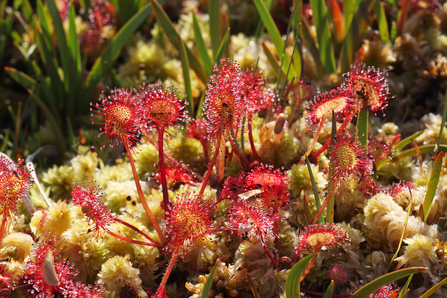Sundews are probably the most well-known of all the carnivorous plants. The sundew is a strange and beautiful plant; it wouldn’t look out of place on a Hollywood depiction of an alien planet. It stands out from the crowd with its hair-like tendrils on each greeny-red leaf. The tendrils glisten with droplets that entice passing insects. However, these droplets are actually a very sticky dew that traps the insect. Much like a spider’s web, the insect’s struggling movement is detected via the tendrils which curl inwards to engulf it.
The fascinating reason behind the sundew turning to an insect led diet is an amazing example of how adaptable nature can be. This tiny, slender plant can be found among the soggy sphagnum mosses at the shores of bog pools, wet heaths and peaty moors. This acidic habitat does not provide the required nutrients for the plant to survive. Overtime, it has evolved to become carnivorous to supplement its diet.
There are several species of the sundew, the most common is the round-leaved. This plant can grow to around 20cm tall. With green-red leaves forming a rosette at the base of the plant, each leaf houses its tendrils. Small white or pink flowers appear in summertime, and are held on top of red, hairless stems that emerge from the centre of the plant.


